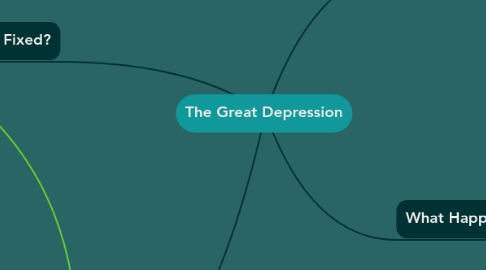The Great Depression
by Scott Loureiro

1. FDR's First Act: It dealt with the banking crisis, Banking Holiday, banks shut down and subject to government inspection, allowed to open when it was considered healthy. The people's confidence returned, they redeposited, allowing banks to invest in the economy
1.1. Step 2: Stock market reform, Security Exchange Commission est. to police the NYSE practice of buying on margin was regulated
1.2. Step 3: To put more money in circulation, FDR went off the "Gold Standard" (gov't could print more $ than Fort Knox gold reserves would allow), With more money in circulation, wages and prices increased
1.3. Food Stamp Act of 1939 gave away surplus food to poor, also guaranteed farmers a market.
1.4. Civilian Conservation Corps. (CCC): In 1933, set to establish work for young men ages 18-25, in areas of reforestation, soil conservation, flood control, road construction and it also took them out of urban labour markets, but Black People not permitted to enroll.
1.5. Social Security Act (1935)- feared by opponents as "creeping socialism"- this act typifies the WELFARE STATE - unemployment insurance, old age pensions
2. How Did It Get Fixed?
2.1. "The New Deal" this was the name Franklin Roosevelt gave to his new program to fight the Depression
2.2. The first phase of the New Deal dealt exclusively with economy reform, unlike Hoover, FDR believed government legislation and involvement was crucial to stimulate the economy
3. Reasons Why It Started
3.1. Money was plentiful so banks made out loans with almost no hesitation.
3.2. Investors only had to pay for 10% of the stock's actual value at time of purchase
3.3. Stock Speculation: People were buying and selling stocks quickly to make fast money
3.4. Everybody got nervous so everyone sold there stocks resulting in the crash. With all that money being gone banks had no money to pay their own bills and none to make their different payments.
4. What Happened Next?
4.1. With no money in the flow, the unemployment skyrocketed.
4.2. Since there was no money to buy productivity slowed a great amount.
4.3. President Hoover’s response was he didn't believe that the gov't should play an active role in the economy
4.4. President Hoover worked out a system with European powers that owed U.S. money as a result of WWI debts. It put a temporary stop to war debt & reparations payments


